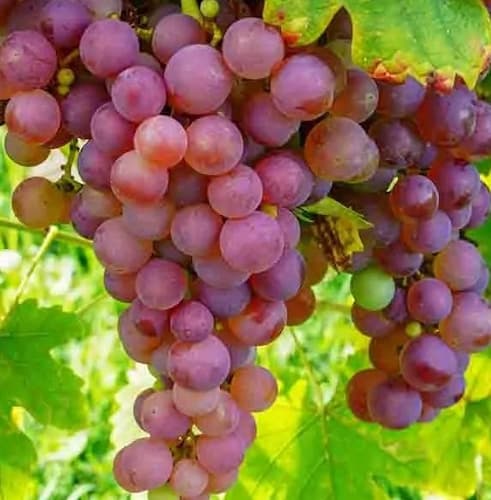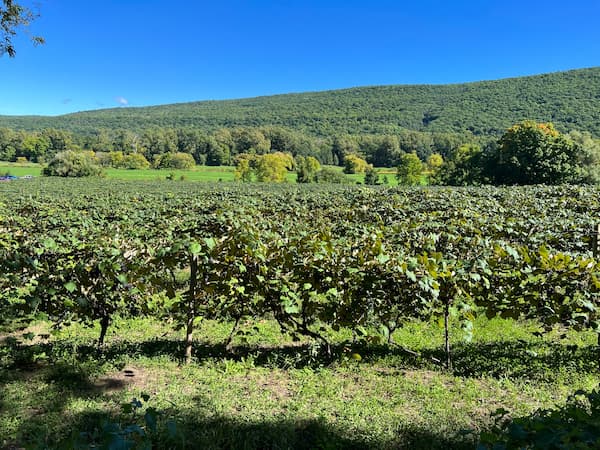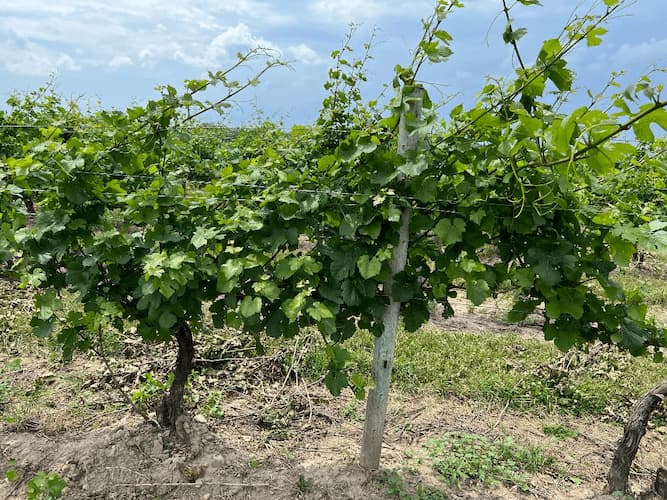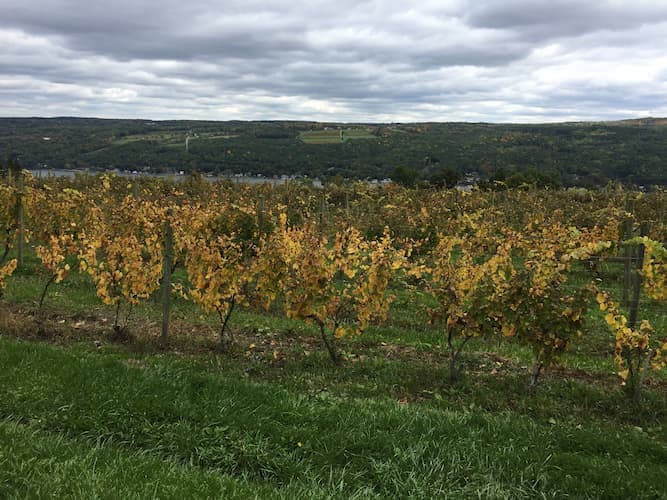How to Grow Grape Vines

About Growing Grapes
People have been growing grapes for thousands of years. Hence, throughout the ages, men and women have loved grapes. Some folks love them fresh. Some of us prefer them dried into raisins. And, some of us love the juice and wine of this delicious and nutritious fruit. Most of us love grapes in any and all ways. Many gardeners are growing grape vines in their backyard gardens. And more than a few gardeners will press them into a homemade wine in the Fall, or ice wine in the winter.
Grapes are berries that are grown in a cluster on a long-lived, woody vine. While the vast majority of varieties originated in Europe, there are several varieties of North American origin.
Did You Know? There is even a variety that thrives in the hot southeastern region of the United States. It is the Muscadine grape.
During early Fall, a trellis filled with hanging clusters of sweet, ripe grapes is both attractive and a popular munching spot for home gardeners and visiting friends and neighbors.
Grape Grower’s Theme Song: I Heard It Through the Grapevine
Grape Plant Specifications
Flower Color: Green
Flowers Bloom: Flowering begins in late spring.
Days to Harvest: 30 to 70 days after fruit set.
Fruit Harvest Time: August to October. Ice Wine grapes are harvested in the winter.
Vine Length: An unpruned grape vine can grow 115 feet long. However, long vines reduce fruit production.
Light Requirement: Full sunlight.
Ideal Soil pH: 5.5 – 6.5.
Plant Hardiness Zones: 4 – 10
Number of Species: 60 – 80.
Native To: Asia and Europe.
Botanical Name: Vitis vinifera

Light Requirement
Grow grape vines in full sun. The more direct sunlight the bettter. Sunshine directly affects fruit quantity and quality.
Varieties of Grapes
There are 60 to 80 species of grapes. And, there are countless varieties. There even are warm weather varieties to grow in the hot, humid environment of Florida. Lucky for us, grapes come in all kinds of colors and varieties. In general, they are categorized by colors: White, purple, and green being the most common. There are also blue, black, and red varieties, too. There are seeded and seedless varieties. From a quality perspective, grapes are classified as wine, table, or raisins.
How to Grow Grapes - Vine Propagation
Grapes are propagated by rooting sections of the vine. Vineyards that need large supplies will cut 12-14″ sections of the vine and store them in moist soil in the fall. In the spring, it is planted in moist soil, where it is allowed to root. The new vines are later planted in a new vineyard.
Home gardeners often use an easier method. In the spring, take a vine and stretch it to the ground. Cover part of it with some garden soil. Keep the soil moist. After it has rooted, cut the vine from the mother plant, and transplant the new vine to its new home in your garden.
New vines need a couple of years’ growth before they produce heavy loads of luscious, sugar-filled fruit. So, plan accordingly.
Did You Know? Different varieties are used to make wine than those used in baking.

How to Grow Grapes
Home gardeners find grapes are easy to grow. Protecting them from animals, on the other hand, is often a real challenge.
Plant new vines in full sun. Plant the vines on the south side of a hill, if possible. As a result, it maximizes the amount of sunshine and warmth the vines receive during the growing season. Additionally, the plant roots do not like wet or soggy soil. Also, growing grapes on a hillside or slope helps with drainage. They grow well in dry, average soil.
Grape vines need the support of a trellis or fence. Train the main vine straight up a fence pole. Allow secondary vines to grow outward on fence posts or wires. The tendrils of the vines will attach themselves to the fence. You may need to tie the vine down to get it started.
Once the vines are established, they need little attention during the season. Be vigilant for insect and plant diseases. Adding a little fertilizer once a month is helpful. Water vines during droughts only.
Prune the vines in the Fall. First, remove any tertiary vines off the secondary vines. Thin and aggressively, remove dead vines, and allow ample room for next year’s growth.

Insect and Plant Disease
Occasionally, insect infestations occur. Therefore, treat with an insecticide as needed.
A variety of plant diseases can afflict your grapes. They include powdery and downy mildews, viruses, and black rot. Use fungicides early. Apply before humid weather sets in.
More on Insects and Disease
How to Grow Grapes - Harvesting Grapes
Grapes are harvested late in the fall, just before the first frost. You can pick some early for use at the table. Place a bowl of fresh grapes on the kitchen counter and they won’t stay there for long!
Are you growing to make raisins? We certainly hope you devote some of bountiful harvest to drying them to make raisins. So, if you want to give it a try, pick some ripe grapes, wash and remove them from the stem. It needs to be a seedless variety. Lay them out on a pan, a screen, a plate, or on paper. We recommend using a screen. Allow them to dry in the sun with plenty of air circulation. If you dry them outdoors, watch for critters. Bring them in at night, or when rain is forecasted.
Harvesting Grapes for Ice Wine
Creating ice wine is a long and expensive process. But, the end product is a delicious, premier wine with intense flavor. Canada is the largest producer of ice wine. his is largely because of the cold climate. However, it is also made in the colder, more northerly areas of the United States and some European countries.
It process begins in Autumn. The grapes are on the vine for an extended period of time. So, it is important to cover them with pest netting to keep the birds from feasting on the sweet, high-energy fruit. Next, comes the long anxious wait.
Harvesting grapes for ice wine usually begins between December and February, depending upon weather conditions in the field. Temperatures below freezing are necessary to freeze the water content in the grapes. Then, picking begins when the overnight temperatures fall to 19°F for three or four nights in a row. The cold job of picking the grapes is usually done by hand. Without a doubt, it’s a labor-intensive job.
The pressing process leaves most of the frozen water content behind. The remaining juice is sweet and highly concentrated. It is only about 10% to 20% of the total grape content.
Medicinal Uses
In recent years, medical studies have suggested red wines have anti-oxidants that can help to lower cholesterol and reduce the risk of heart ailments. The same is true for feesh grapes and juices.
Related Articles and Recipes
Also, people who read this article will like:
Recipe of the Day: Grape Pie
Please support our site. Shop for:
We hope you learned a thing or two from this article on "How to Grow Grapes". Thus, please tell your friends about us.
- rmmatthews100@hotmail.com
- 585-721-6528
- Rochester, NY
©1999-2024 GardenersNet.Com, All Rights Reserved

